Chapter 1 - Napoleon's Vision for the Arc De Triomphe
How was the design agreed upon? Why do people think the arch could have been an elephant? Why was a huge wooden model constructed? These questions and more are explored in Chapter 1!
Arc De Triomphe Elephants
L'elephant triomphal
Legend has it that the Arc de Triomphe could have been a giant triumphal elephant. This is not quite true.
In 1758, the French architect Charles Ribart proposed a L’elephant triomphal, to celebrate the victories of King Louis XV in the War of Austrian Succession. It was never proposed to be Napoleon’s monument celebrating his victories and that of Revolutionary France. However, as the elephant would have been located where the Arc de Triomphe now stands, the two are often confused.

Elephant of the Bastille
Part of the reaon L’Éléphant Triomphal is often misattributed to the Arc de Triomphe is because Napoleon did intend to build a giant elephant statue elsewhere. The Elephant of the Bastille was originally conceived in 1808 by Napoleon I. A colossal statue was to be built out of bronze and placed in the Place de la Bastille. However, only a plaster full-scale model was built. At 24 m (78 ft) in height, it was an impressive model nonetheless!
Ultimately, the Elephant of the Bastille was not to be, and the July Column was constructed on the same spot.

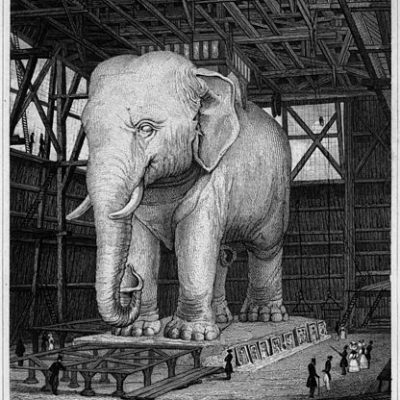
Chapter 2 - A Complicated Construction
Love Conquers All
While construction was delayed due to the Napoleonic Wars, a replica of the Arc de Triomphe was built for the arrival of Napoleon’s new wife, Marie Louise of Austria. Made of wood, the life-sized model encouraged Napoleon to recommit to the arch’s construction, despite the financial constraints of the war effort.
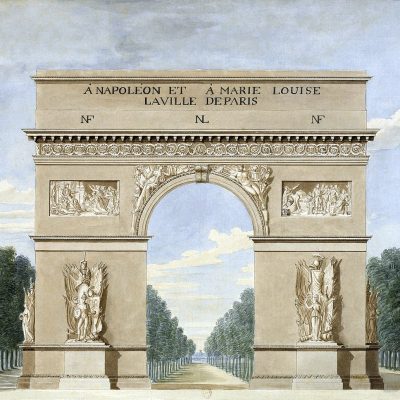
Chapter 3 - The Modern Heart of Paris
Acrobatic Protests
Situated at the heart of modern Paris, the Arc de Triomphe has been the backdrop of historic events. This included a daring protest in 1919 by Charles Godefroy. The veteran pilot was protesting a government decision to make airmen walk on foot at a recent World War One victory parade. Nothing insulted the ego of pilots like being treated the same as common soliders!
Chapter 4 - Statues on the eastern side of the Arc de Triomphe
Tour Starting Point
Chapters 4 to 10 of your self-guided audio tour of the Arc de Triomphe will commence on the eastern side of the monument.
Here are two ways to identify the eastern side:
- The eastern side is the closest to the Champs-Élysées, the most famous avenue in Paris. This is the avenue which leads from the Arc de Triomphe to central Paris. Google Maps can help you identify it, or ask a friendly face.
- The western side has statues containing a large horse (right side) and a large bull (left side). If you see statues with these animals, you are are on the wrong side. Walk to the other side of the arch, where on the left you will find a statue of Napoleon being crowned by a female figure. This is the eastern side.

Tour Map
The map below will help you locate the correct chapters for the relevant sections of the Arc de Triomphe. Your audio tour will guide you around and underneath the arch, but this map will help you identify your directions.
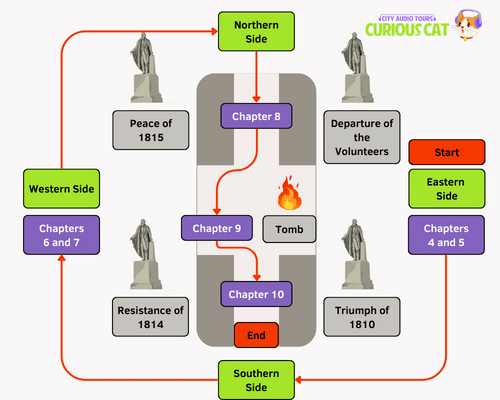
Statues on the eastern side
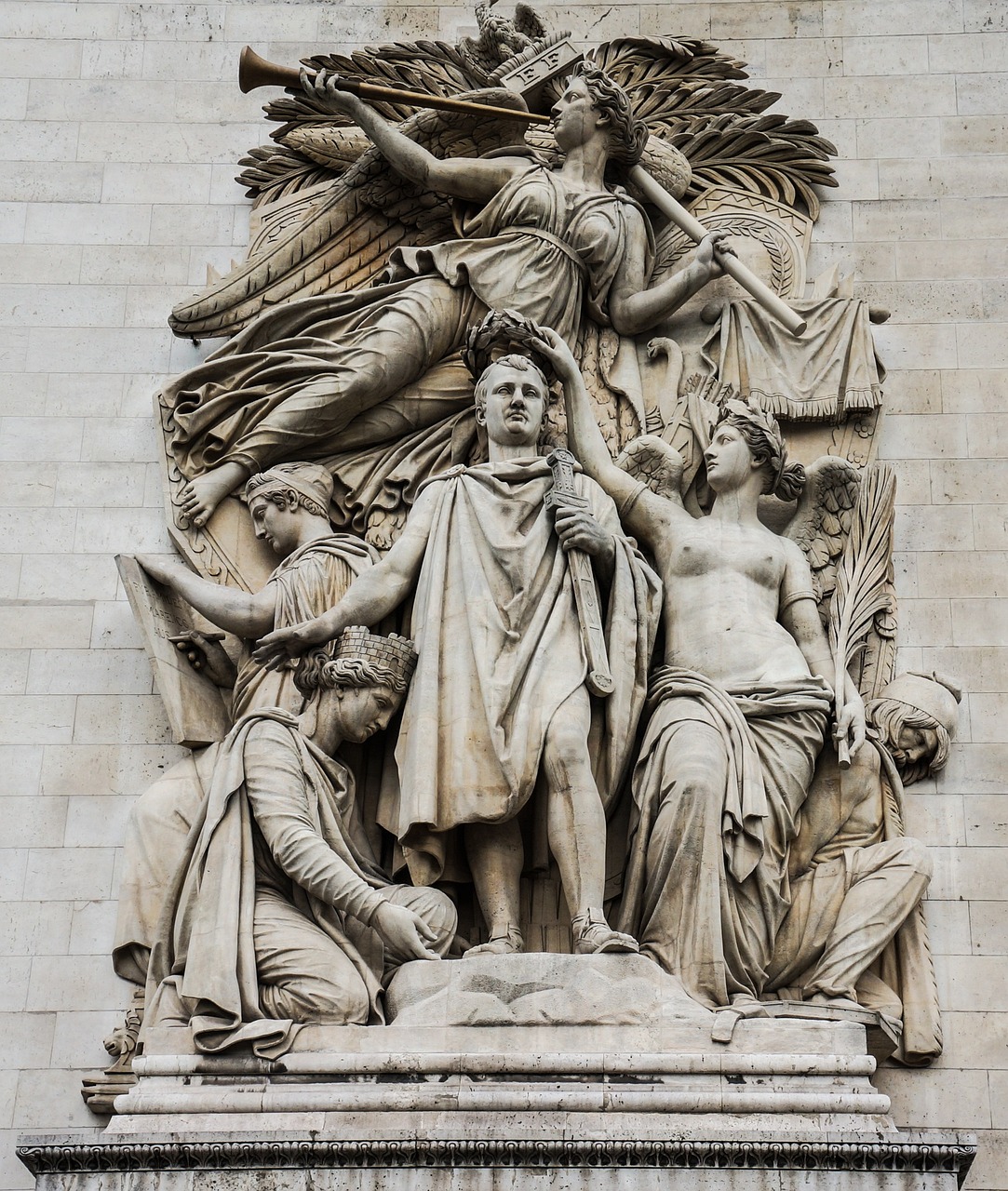
Triumph of 1810
This statue can be found on the left side of the Arc de Triomphe's eastern face. It depicts Napoleon being crowned by the Goddess of Victory. This is the first statue discussed in Chapter 4 of your tour.
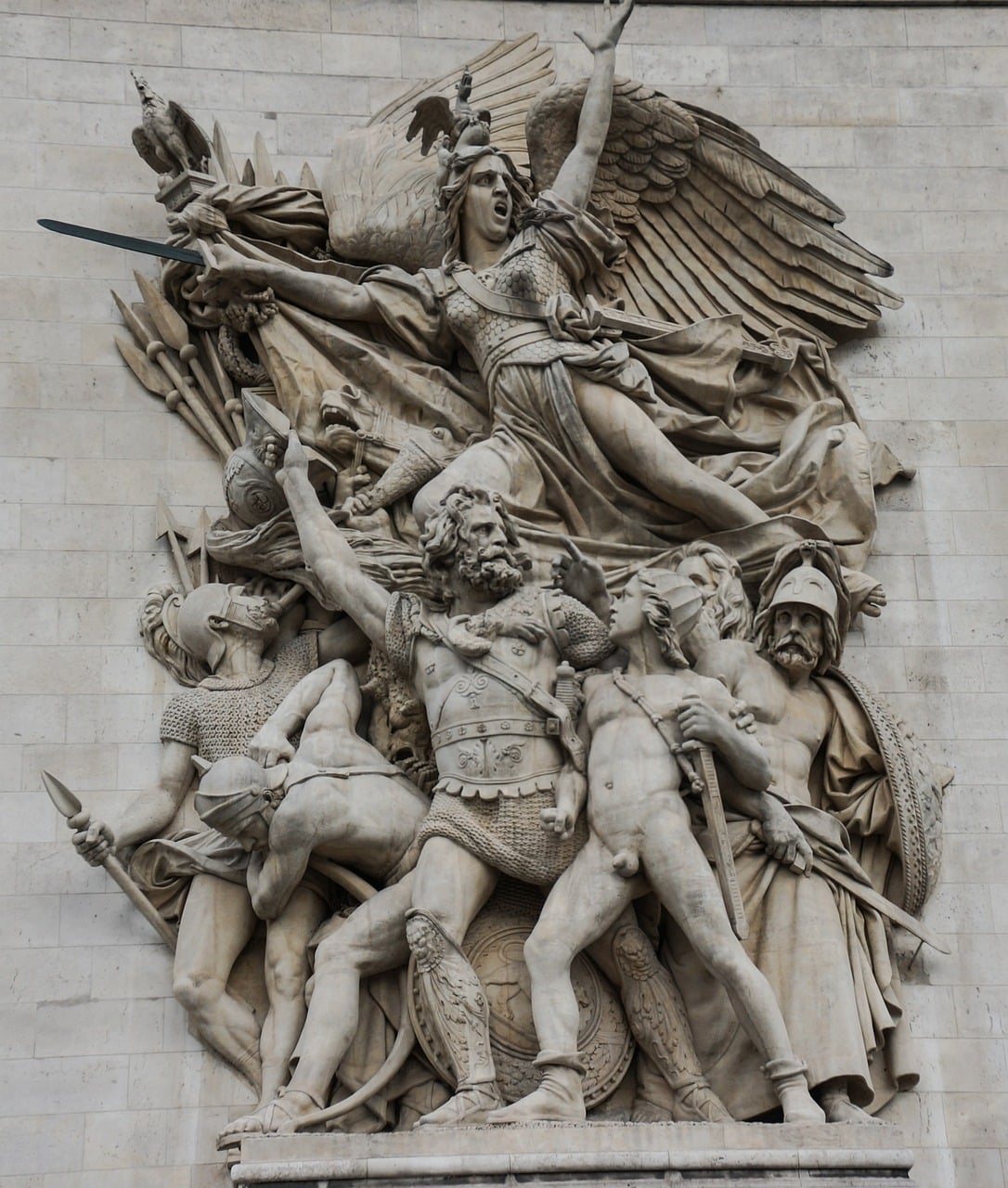
Departure of the Volunteers of 1792 ( La Marseillaise).
This statue can be found on the right side of the Arc de Triomphe's eastern face. It depicts regular citizens preparing to depart for the front lines and defend the French nation. This is the second statue discussed in Chapter 4 of your tour.
Chapter 6 - Statues on the western side of the Arc de Triomphe
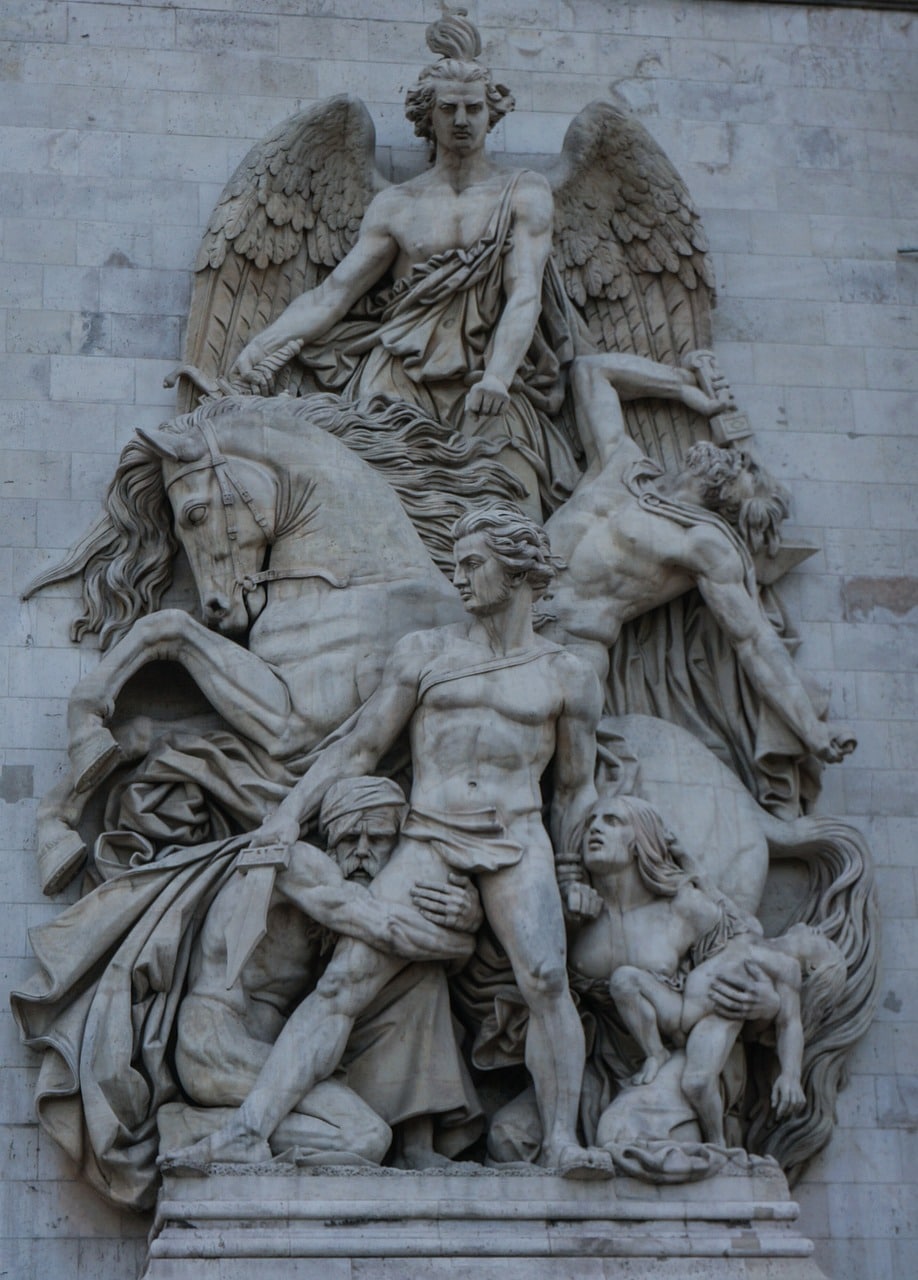
Resistance of 1814
This statue can be found on the right side of the Arc de Triomphe's western face. It depicts the French people bravely resisting invasion in 1814. It can be identified by the large horse in the center of the statue. This is the first statue discussed in Chapter 6 of your tour.

The Peace of 1815
This statue can be found on the left side of the Arc de Triomphe's western face. It depicts the vital social activities that flourish during peace and which are too often neglected during war time. It can be identified by the large bull in the background. This is the second statue discussed in Chapter 6 of your tour.
Chapters 8 and 10 - Names on the Arc de Triomphe
Finding Napoleon's Marshals on the Arc de Triomphe
Northern Wall (Behind The Peace of 1815)
The names of Napoleon’s Marshals on this wall include:
- Emmanuel de Grouchy (Column 4)
- François Etienne Christophe Kellermann (Column 3)
- François-Joseph Lefebvre (Column 3)
- Jean Baptiste Jules de Bernadotte (Column 3)
- Jean-Baptiste Jourdan (Column 3)
Eastern Wall (Behind the Departure of the Volunteers)
The names of Napoleon’s Marshals on this wall include:
- Adolphe Edouard Casimir Joseph Mortier (Column 3)
- Etienne Jacques Joseph Alexandre Macdonald (Column 3)
- Jean Lannes (Column 3)
- Jean-Baptiste Bessières (Column 3)
- Józef Anton Poniatowski (Column 3)
- Laurent Gouvion St. Cyr (Column 3)
- Louis Nicolas Davout (Column 3)
- Michel Ney (Column 3)
- Nicolas Charles Oudinot (Column 3)
Southern Wall (Behind the Triumph of 1810)
The names of Napoleon’s Marshals on this wall include:
- André Masséna (Column 3)
- Auguste Frédéric Louis Viesse de Marmont (Column 4)
- Charles Pierre François Augereau (Column 3)
- Guillaume Marie Anne Brune (Column 3)
- Jean Mathieu Philibert Sérurier (Column 4)
- Joachim Murat (Column 4)
- Louis Alexandre Berthier (Column 3)
Western Wall (Behind the Resistance of 1814)
The names of Napoleon’s Marshals on this wall include:
- Bon Adrien Jannot de Moncey (Column 3)
- Catherine Dominique de Pérignon (Column 3)
- Claude Victor Perrin (Column 3)
- Louis Gabriel Suchet (Column 3)
- Nicolas Jean de Dieu Soult (Column 3)

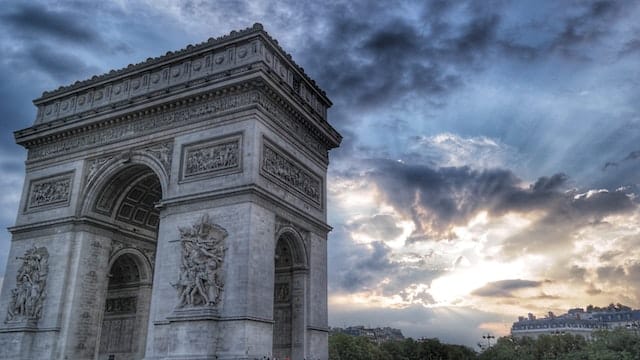
Comment (0)